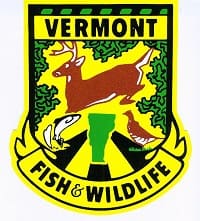Vermont Deer Hunting Results Reflect Stable, Healthy Population
OutdoorHub 01.15.14

The Vermont Fish & Wildlife Department says preliminary numbers show hunters took slightly more deer in 2013 hunting seasons than the previous three-year average, reflecting a stable and healthy deer population in the state.
Deer biologist Adam Murkowski says reports from big game check stations throughout Vermont indicate deer hunters had a series of successful deer seasons in 2013. Hunters took a total of 14,116 deer in the state: 3,221 during archery season, 1,706 during youth weekend, 6,711 in rifle season, and 2,478 in muzzleloader season.
“The number of deer taken and the weight of deer measured by biologists indicate that Vermont’s deer population continues to remain in good health,” said Murkowski. “Compared to the average of the previous three years, harvest levels rose during the archery and November rifle seasons and remained roughly level during youth season.”
“We issued fewer antlerless permits for muzzleloader season the past couple of years, resulting in lower muzzleloader season harvests,” said Murkowski. “This decrease in antlerless permits is based on our management goal to promote a slow and steady growth of the herd in many parts of the state.”
Department biologists operated 24 big game registration stations during the two-day youth hunt and 8 stations during the November rifle season. Accurate data on the age, sex, weight, antler characteristics, and overall health from 1,091 deer were collected with assistance from members of the University of Vermont Fisheries and Wildlife Society (UVM-TWS). Biologists and UVM-TWS members also assisted the Department of Health in monitoring for Eastern Equine Encephalitis (EEE).
Biological data from the check stations show that Vermont’s deer are healthier than in the past, with the average yearling buck weighing 10 lbs more than in the 1960s and 4 lbs more than the 1990s.
According to Murkowski, the primary goal of Vermont’s deer management strategy is to keep Vermont’s deer herd stable, healthy and in balance with available habitat.
“Maintaining an appropriate number of deer on the landscape ensures Vermont’s deer and the habitats that support them remain healthy and productive,” said Murkowski. “Healthy habitats and stable deer herds are beneficial to the deer themselves, important to Vermont’s deer hunters, and they are beneficial to the health of the land and other wildlife.”
“Under our current goal of maintaining a healthy deer herd, a stable harvest is a good indicator that we are meeting our management objectives set out in Vermont’s 10-year Big Game Plan,” said Murkowski. “As long as the deer herd is healthy and responding to our management prescriptions, season totals in any given year may be up or down from the previous year. But the fact that fluctuations are small, rather than major boom and bust cycles, is an indicator that management strategies are working.”
Murkowski says the 14,116 deer brought home by hunters during the 2013 deer seasons resulted in Vermont hunters being able to benefit from over 700,000 lbs of lean high protein venison.
The 2013 report on deer hunting seasons with final numbers will be on the Vermont Fish & Wildlife website (www.vtfishandwildlife.com) by early February.

